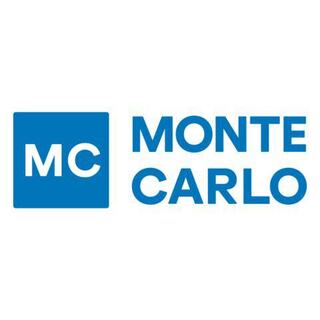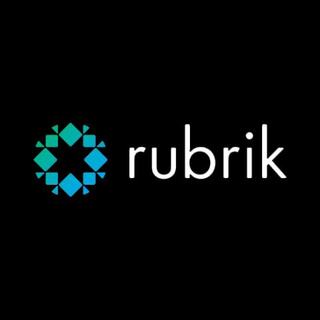Operating Advice
Scaling Your Product Organization, Part 1: Hiring

PART 1: HIRING
Scaling a business for long-term success is hard – and so is finding the guidance, insight and lessons learned by those who have done it successfully. To help founders and their teams, we’re creating a series, Scaling Your Product Organization, to collect and disseminate the collective intelligence on the right (and wrong) ways to scale. Further out, I’ll publish edited versions of my conversations with leading experts on best practices for scaling Engineering, Finance, Marketing, Sales, and Security organizations.
To create the most useful takeaways on scaling your product org, I drew on my own experiences and interviews with world-class product leaders at:
- Crowdstrike * (Amol Kulkarni, Chief Product and Engineering Officer)
- Snowflake (Chris Child, Senior Director of Product)
- HashiCorp * (James Bayer, EVP R&D)
- Rubrik * (Anneka Gupta, Chief Product Officer)
- Aiven * (Hannu Valtonen, Chief Product Officer and Co-Founder)
- Monte Carlo * (Biswaroop Palit, Head of Product)
Amol, at Crowdstrike, eloquently framed his overarching goals this way: “Build an architecture for the long run, design your product for the medium term and sprint in the near term.”
Put another way: Combining built-in architectural flexibility with problem specificity enables execution agility.
And that’s when the magic happens.
While each company’s path is unique, the following best practices enabled these leaders to successfully scale their product orgs:
- Build a team of product managers that best matches the company’s current phase (the subject we dive into below)
- Set up those PMs for success through stage-specific planning and product goals
- Expand the product footprint to remain indispensable
Part 1, below, focuses on hiring – product managers, specifically. Most leaders don’t realize hiring a PM with the right skills for their company’s current stage of development can take up to a year.
In parts 2 and 3 of Scaling Your Product Organization, I’ll discuss organizational design and product expansion as your company continues scaling beyond product-market fit (PMF).
Thanks for reading.
– Shravan Narayen, IVP
SUCCESS BEGINS WITH SUCCESSFUL HIRING
Hiring – it’s the cornerstone to everything good (or not) that can happen at a rapidly growing company. Hiring the right product managers, in particular, can be the difference between making rapid progress and enduring multiple quarters of diminished productivity and damage to the culture.
What follows is an edited distillation of the ideas and insights that came out of my conversations with these four product experts.
WHAT CHARACTERISTICS SHOULD YOU LOOK FOR IN HIRING PRODUCT MANAGERS POST- VS. PRE-PMF?
In the early going, you should prioritize PMs who are comfortable with (if not thrive on) ambiguity, who emphasize “good enough” over perfect, and who love talking to customers. Most of the time, early PMs are building on the founders’ product vision and roadmap, so the ability to execute and get things done with limited structure is critical. Great early PMs often have served in customer-facing roles (like sales engineering) or demonstrated an ability to ship product.
In the beginning, you need people who “enjoy seeking out that information across user forums, hacker news, competitive companies, meetups, among others,” said James Bayer, EVP of R&D at HashiCorp. Domain expertise at this juncture is less critical, he said; the real goal is to rapidly gather customer feedback and produce meaningful outcomes.
Post-PMF, it’s helpful to have people who enjoy optimizing and who have the systems thinking required to build teams. When hiring, you want to focus on people who have owned a mature product, who understand how to build and execute against plans that span multiple quarters, and who enjoy the process of managing across teams. Because the product iterations change, so also must the qualities of the PMs driving those iterations.
Amol Kulkarni, Chief Product and Engineering Officer at Crowdstrike, suggested looking for people “who are good at processes, solving the granular problems, and retaining customers through incremental improvements.”
Biswaroop Palit, Head of Product at Monte Carlo, summarized it this way: “There’s something within the DNA of people who enjoy working on quick iterations and listening very intently to customers,” he said, “versus others that prefer optimizing something and getting more out of that machine.”
WHEN AND HOW DO I ADD LAYERS TO MY PRODUCT ORG?
As the product org scales, what has been a relatively flat organization will need to add layers. Two elements to doing it successfully are knowing when and how.
Each leader has a different heuristic for when to start adding PMs and adding layers to the org.
James said a 10:1 engineer-to-PM ratio means it’s time to start hiring PMs. Chris Child, Senior Director of Product at Snowflake, suggested a product leader “can only be an effective manager up to a certain number of direct reports” – about 8, he said – at which point it’s time to start adding more PM layers. Each company will be different. If you’re building products for developers, you can often delay hiring PMs and adding layers because your team naturally understands the needs of its end users.
This advice may seem counterintuitive given the current focus on belt tightening, but with PM hiring, scaling ahead of where you need to be is important, James said. Because the founders tend to maintain day-to-day product ownership for a long time, PM hiring usually doesn’t receive the attention it deserves as the company scales, and you end up playing catch up instead of focusing on expanding product lines and other critical functions. Most leaders don’t realize that hiring a single PM can take a full year!
As for advice on the right way to add layers, Chris mentioned the importance of consolidating more than you think you need to.
“Overshoot to have a smaller number of direct reports,” he told me, “and identify who can step up now, who can be coached, and who can build a team.” While it will be a big change for both the product lead and the individual contributors, the extra consolidation will leave room for additional hiring.
Of course, the best way to quickly scale up your org is to have a great recruiting team, and as James noted, one that is in sync with your team’s specific culture.
HOW DO YOU KNOW WHETHER TO BRING IN AN OUTSIDE LEADER FOR THE PRODUCT ORG?
One of the biggest debates on product leadership is growing from within versus hiring from outside. While most founders and heads of product prefer the former, the reality is it’s rare to find someone who exhibits the characteristics of both pre- and post-PMF PMs and also enjoys building teams, planning and managing up with the founders.
Bringing in a head of product pre-PMF usually isn’t the right move, Biswaroop and Chris told me, because that role is occupied by the founders. Doing so post-PMF may make better sense, as the CEO/founders tackle other problems with go-to-market and scaling.
But there’s a caveat, Chris said: “Right after getting to PMF, it can be hard to find the right head of product. It’s often easier to bring in a director who can either grow into that or buy time before hiring a head of product.”
Whatever direction you take here, remember that leaders should complement the strengths (and backfill any weaknesses) of the founders. For example, if you are more of a visionary founder, surround yourself with product leaders who spike on keeping the trains running.
Valuing the contributions of early employees is another important consideration for creating a culture that rewards excellence.
“There is often a discounting of the work people have done internally to get from X to Y,” Amol said. “There is no guarantee that they can go from Y to Z, but the value of their work gets thrown out too often.” Which is a surefire way to lose the culture-setters that also have the most institutional knowledge about why certain decisions were made.
“The concept I’ve used is one of an achievable stretch,” Amol said. “If I see the potential for someone to take on additional things and be reasonably successful – which isn’t always a slam dunk – I’ll go for it.”
SCALING STARTS EARLY
While a company’s early stages often resemble an exercise in controlled chaos, being thoughtful about how you scale your organization pays dividends down the road. Hannu Valtonen, Chief Product Officer and Co-Founder at Aiven, believes that the right way to scale involves taking stock of your company early on, when you’re roughly 20-30 people in total; analyzing how your company should look at 150 people; and then consciously building up your organization to that level.
Keep in mind that changing your team structure and alignment multiple times as you scale is not just OK but expected! What works pre-PMF will usually not scale to post-PMF, which in turn will be changed as you get closer to a public offering. We’ll dive into this in more detail in our next post.
- IVP portfolio companies
TOP 3 TAKEAWAYS
- Hiring PMs takes longer than you assume! There aren’t that many and finding the right fit takes time. Start the process 3-6 months in advance of when you need a PM in place.
- Product management is very different pre-PMF vs. post-PMF vs. at scale. Find people that have the passion and skill set for the phase you’re in.
- Find ways to help employees continue contributing, even after the company’s needs have grown beyond the skills you hired them for. They may no longer be right for that same role, but you wouldn’t be where you are without them.
Meet The Contributors

The leader in cloud-delivered endpoint protection and cybersecurity

An enduring leader in cloud infrastructure automation

Delivering end-to-end data observability and reliability to power data-driven business

A cybersecurity company with a mission to secure the world's data
